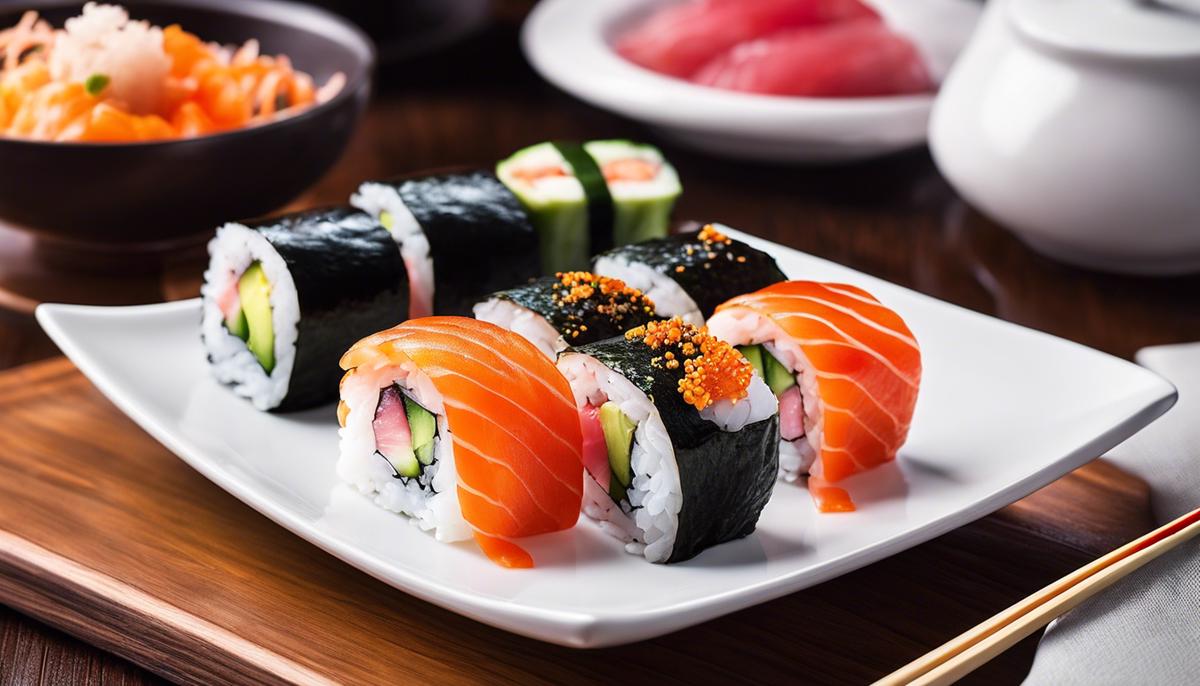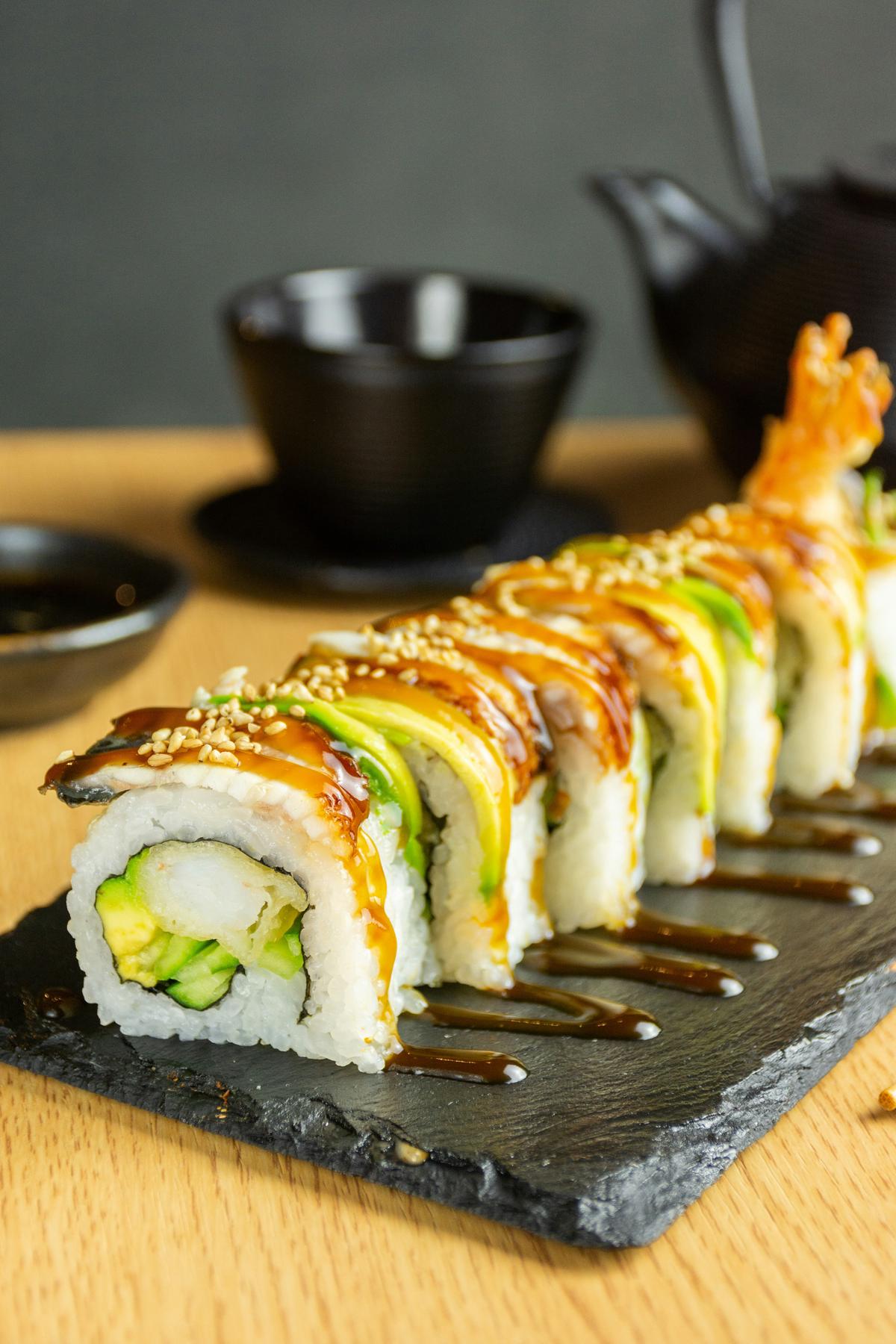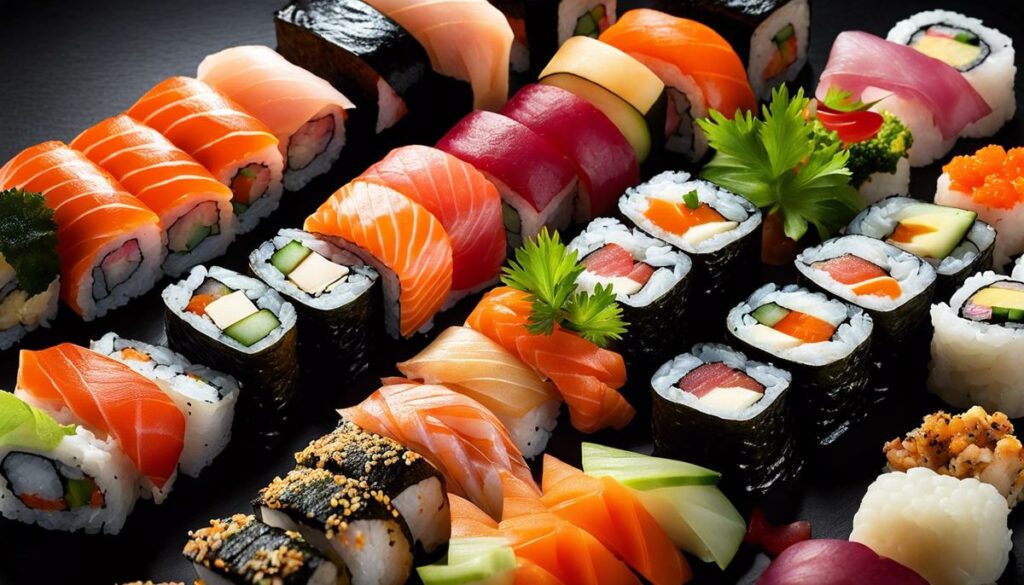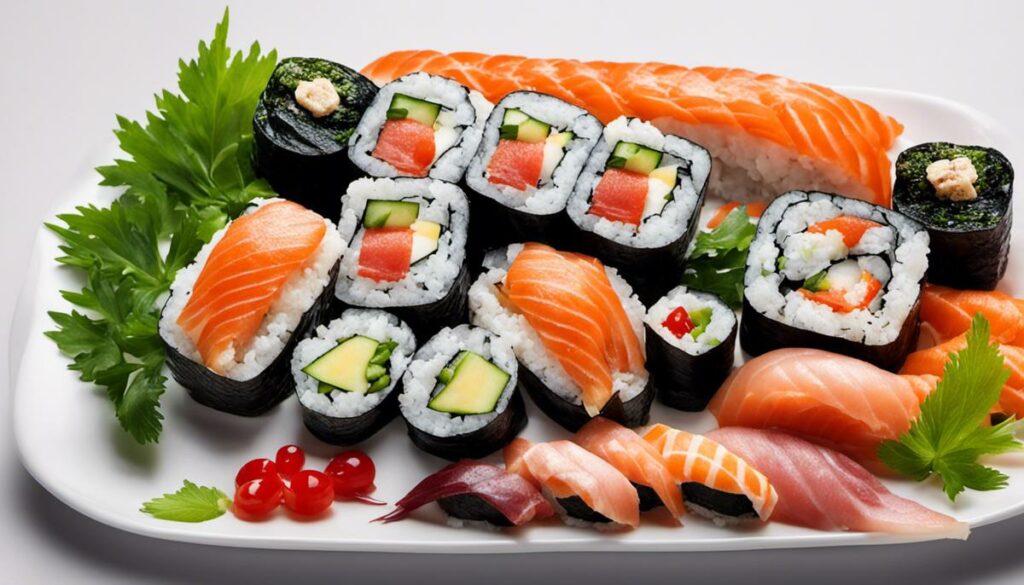In the glittering world of culinary delights, sushi occupies an exotic and fascinating position. This style of food, which inspires enthusiasm all over the world in its many forms, has been refined and perfected over the centuries. But how safe is it to enjoy this treat during pregnancy? In the following sections, we will get to the bottom of this complex of questions and discover together the charm of sushi and its relevance in the diet of a pregnant woman. Let’s start our journey by looking at the Japanese origin of sushi, its different shapes and types, and why it’s considered a chic style element.
Understanding sushi and its types
Title: The Art of Sushi: Variety and Style
In the world of gourmets, sushi is definitely a perennial favorite. This Japanese delicacy, defined by scrupulous precision and aesthetically arranged components, has conquered not only the culinary cosmos, but also the fashion world. But why is that? And what are the different types of sushi that make it so stylish and trendy?
Let’s start with the basics. What is sushi anyway? In general, sushi consists of specially traveled rice, combined with other ingredients such as fish, seafood or vegetables. Typically served with soy sauce, wasabi and pickled ginger, the sushi ceremony is a feast for all the senses. The artistry and glory of the sushi make it a true experience for the eyes and palate.
There are different types of sushi, all of which are known for their unique presentation and preparation.
- Nigiri: Presented in small portions, nigiri consists of a layer of fish or seafood placed on a bed of rice. The minimalist look of this type of sushi exudes simplicity and elegance.
- Maki: Maki rolls are probably the most well-known type of sushi. They consist of rice and other fillings that are rolled into dried kelp leaves and cut into six to eight pieces. Each reel is a small work of art in itself, as it shines in different colors and textures.
- Sashimi: Although sashimi is not strictly sushi, it is often served in sushi restaurants. Sashimi consists of thin slices of raw fish or seafood served without rice. Its charming presentation makes sashimi a favorite among lovers of Japanese cuisine.
- Chirashi: This type of sushi resembles a work of art. Chirashi consists of a layer of sushi rice artfully topped with various ingredients. Arranging the ingredients on the rice is a true form of art that exudes uniqueness and style.
Each of these types of sushi has its own personality and style, and impresses with its unique aesthetics and expressiveness. It becomes obvious that the popularity of sushi in the world of fashion is not a coincidence. Its aesthetic presentation, carefully selected ingredients and artisanal perfection make sushi the perfect choice for the style-conscious foodie.
So, the next time you look at a sushi roll, you should not only appreciate it for its taste, but also acknowledge the art and craftsmanship that goes into making it. Because sushi is more than just a dish, it’s a lifestyle expression.

Sushi and nutrition during pregnancy
Title: The relationship between sushi and pregnancy: relevance and precautions
Hand in hand with the growing popularity of sushi, the debate about its consumption during pregnancy is also increasing. Sushi is not only a treat for the palate, but also a fashion leitmotif in the current lifestyle landscape. Therefore, it is important to understand the relevance of sushi during pregnancy and what to look out for.
Sushi is relevant for pregnant women because it is a rich source of omega-3 fatty acids, which are crucial for the development of the brain and eyes of the fetus. However, raw fish, which is often used in sushi, also contains potential risks such as parasitic infections. Therefore, caution should be exercised when consuming sushi during pregnancy.
One aspect that should be considered is the choice of sushi type. Although nigiri, maki, sashimi, and chirashi are all incredible treats, it’s safer to opt for sushi options that include cooked seafood during pregnancy.
In addition, the quality of the sushi plays a crucial role in safety. It should be purchased from reputable restaurants or reliable sources that maintain high standards in the preparation and storage of sushi. You should make sure that the fish is well chilled and fresh.
It is equally important to remember that soy sauce, which is often used to flavor sushi, has a high salt content. This can lead to water retention and high blood pressure, so it is advisable to limit consumption during pregnancy.
Finally, moderation should not be forgotten. Although sushi can be consumed during pregnancy, it should not be done excessively. As in all aspects of a balanced diet, variety is at the heart of health. Sushi can be a tasty and fashionable addition to this variety, but it shouldn’t be the only source of nutrients.
Nowadays, it’s not just about fashion and trends, it’s also about awareness of healthy lifestyles. Enjoying sushi during pregnancy can be a part of it, as long as you are mindful and sensitive to it.

Alternatives and creative solutions
More and more people are enjoying sushi in their daily lives and often, pregnancy doesn’t necessarily change this passionate lifestyle. Amid this rising popularity of sushi, questions are popping up regarding how to consume it during pregnancy. Striking a balance between enjoying this delicious art form and the need for safety for yourself and the unborn is crucial.
One of the main attractions of sushi is its high content of omega-3 fatty acids, which are of great importance during pregnancy. They play an important role in the development of the baby’s brain and eyes. However, eating raw fish carries the risk of parasitic infections, which should be avoided during pregnancy. Therefore, it is important to focus on safer sushi options that contain cooked seafood.
When you choose sushi, quality plays a crucial role. It is important to source sushi from reputable restaurants or reliable sources to ensure safety. Avoid sushi from freezers or environments where the fish has been kept unrefrigerated for a long time.
Another factor to consider is the high salt content in soy sauce, which is often used to consume sushi. High salt content can cause water retention and high blood pressure during pregnancy and should therefore ideally be minimized.
However, do not forget about the importance of moderation. As with all things in life, a balanced diet is the best choice. Don’t overconsume sushi to make sure you have a variety of nutrients in your diet.
After all, sushi not only contains striking beauty, but can also be a tasty and fashionable addition to the diet during pregnancy. With an awareness of healthy lifestyles and sensitivity to the enjoyment of sushi, you can be sure that your passion for sushi can also be pursued during pregnancy. With sushi, a representative facet of lifestyle, it’s safe to say that the baby bump and the craving for sushi can go hand in hand.

Photo by thony_espi on Unsplash
Although the idea of consuming sushi during pregnancy seems quite demanding, creative and elegant alternatives allow us to satisfy the sushi lover in us without risking health. The presented sushi alternatives – be it cooked or vegetarian sushi – invite you to maintain a healthy and fashionable lifestyle. Pregnancy shouldn’t be a burden, but a time of joy and discovering new possibilities, including new culinary experiences. So dare to enjoy sushi in a safe and stylish way, putting your well-being and that of your baby first.


